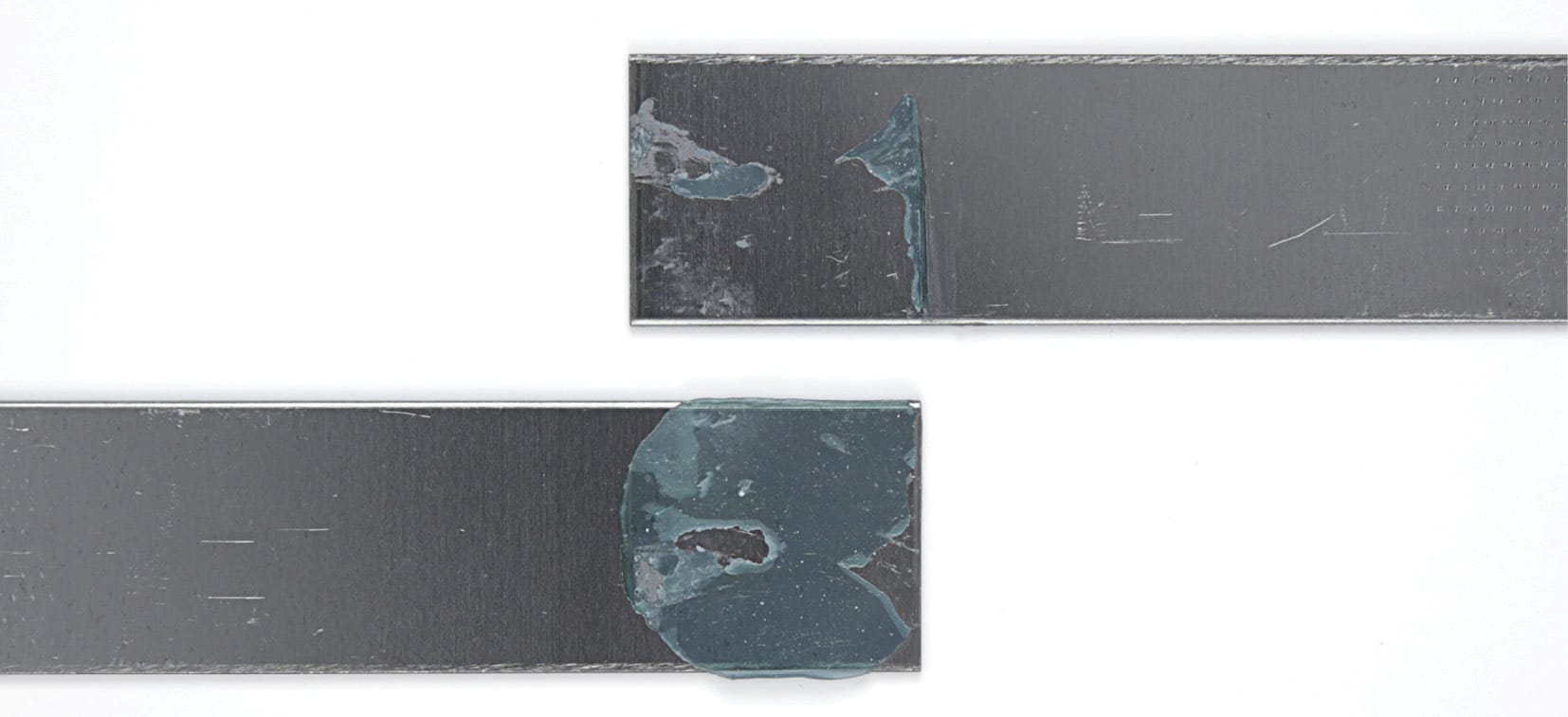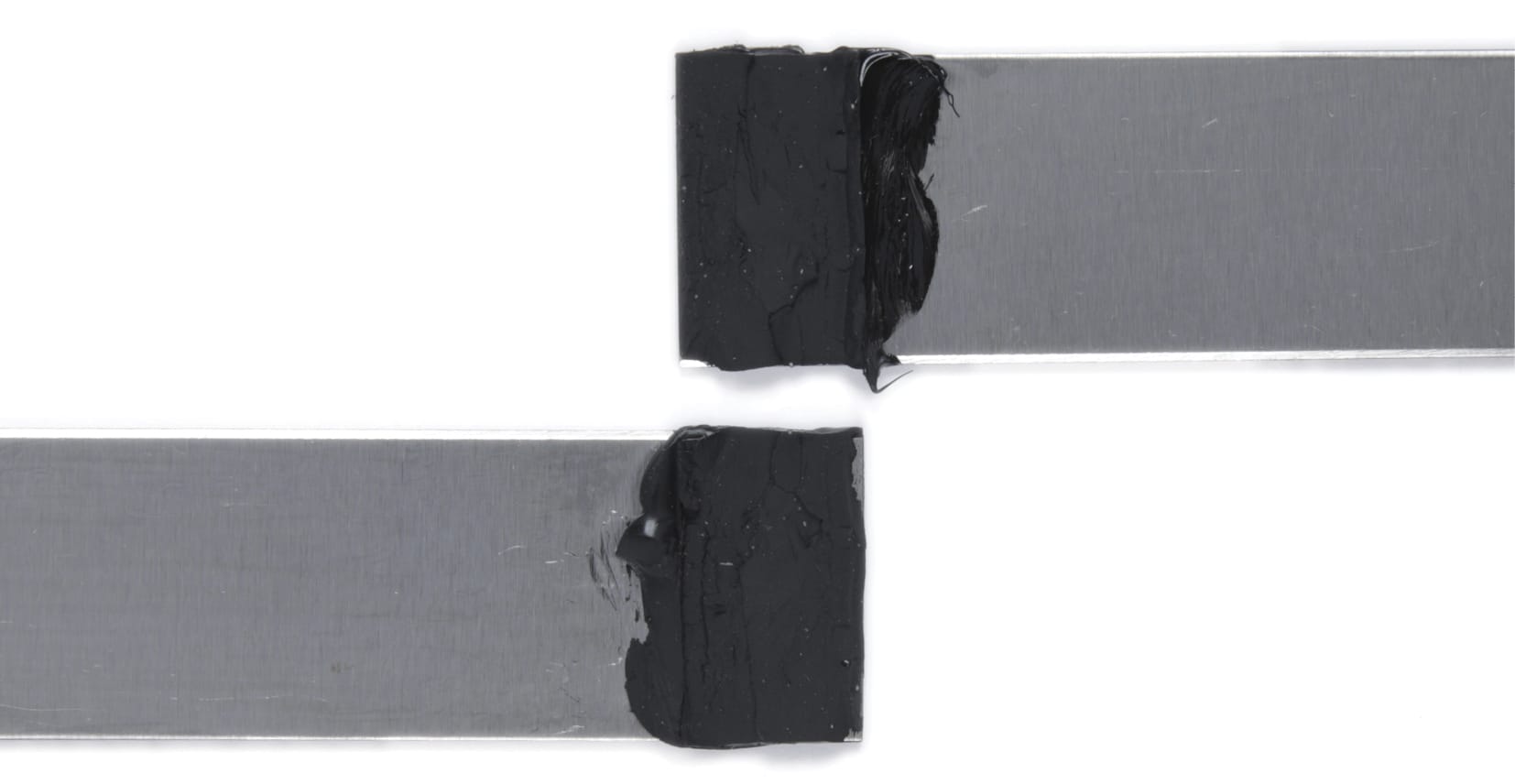7.1.1 Adhesive Failure
Adhesive failure occurs when the bonded assembly is subjected to a load that exceeds the adhesion, causing failure at the interface between the adhesive and the substrates. In this failure mode, there is visible adhesive residue remaining on one of the substrates, or it may be more localised, with each side having a piece of the adhesive layer. This localised adhesive failure often appears with adhesive segments on the two substrates mirroring each other as in Figure 209.

If this is the adhesive failure mode, a stronger bond can be achieved by reconsidering either the surface preparation or the adhesive selection.
7.1.2 Cohesive Failure
Cohesive failure occurs when a fracture appears within the adhesive. In this failure mode, the adhesion strength was not exceeded, meaning that the bond between the substrate and the adhesive was not compromised; rather, the adhesive was overcome by external forces. This means that adhesion to the surface is stronger than the intermolecular bonds of the adhesive. As shown in Figure 210, the adhesive residue is visible on both substrates. This failure mode is common in uncured or insufficiently cured adhesives.



